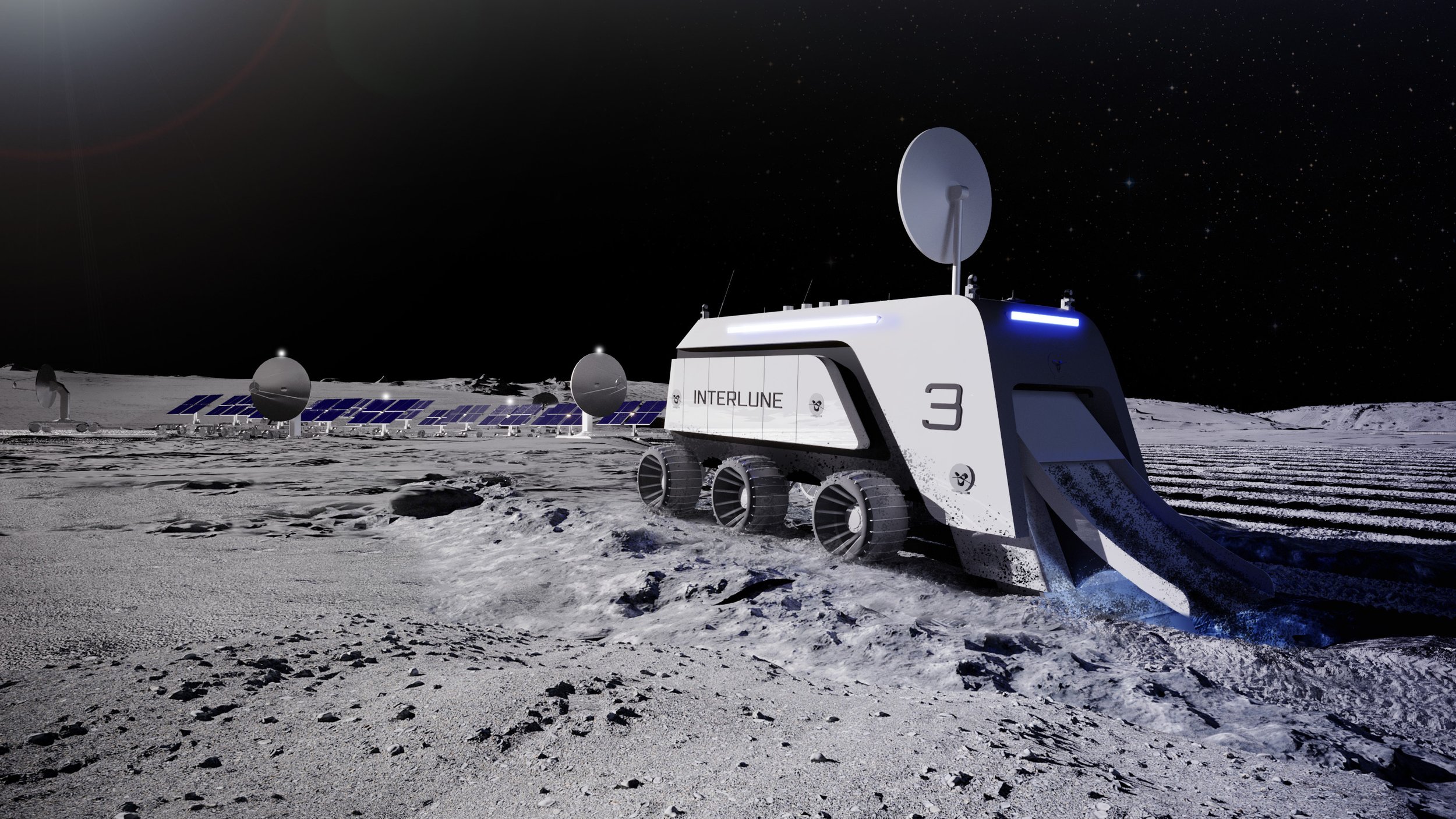
Why We Invested
Aurelia Foundry is thrilled to announce that we have joined Interlune’s Series Seed round. Interlune is a testament to both the enabling opportunities that will be created by greater availability of Helium-3, and the promise of the nascent lunar economy. Our conviction is that within fifteen years, there will be regular mining and infrastructure building activity on the surface of the Moon–from Helium-3 mining, to water ice sourced for propellant, to the early features of a sustainable lunar settlement. Terrestrial demand necessitates this future. We know someone will be doing it–the question has been who can best execute? The strength of the Interlune team and the architecture of their solution assure us that they will be the right group to make this a reality.
Recent successes on humanity’s path back to the Moon have brought a full-fledged lunar economy closer to reality. In February, Intuitive Machine’s IM-1 mission proved the private sector can take us back to the Moon. The pace of lunar missions is rapidly accelerating as well– 2024 is already the first year to have multiple lunar missions since the height of the space race in 1972. There are at least five more missions planned this year and dozens more by the end of the decade. Just like in the development of the Earth orbital economy, increasing launch cadence and innovation in launch vehicles and propulsion will unlock access to the lunar economy. In effect, this will create a taxi between the Earth and the Moon that enables the cost-effective extraction and return of lunar resources.
Nowhere will the effect of this lunar taxi be more pronounced, and commercially viable, than in the mining of Helium-3. This isotope of Helium is far rarer on Earth than the more common Helium-4. However, solar winds, unimpeded by an atmosphere, deposit significant amounts of this isotope on the surface of the Moon. Helium-3 has numerous critical uses here on Earth. Used in medical imaging in MRIs, Helium-3 can be particularly useful for examining lung ventilation and for the diagnosis and treatment of chronic respiratory diseases. Also critical for national security, Helium-3 can be used to detect radioactive materials such as plutonium. After 9/11, the Department of Homeland Security ordered neutron detectors utilizing Helium-3 to be deployed at border entry points; the limited supply has prevented this from being fully rolled out.
Two new innovations will also generate massive demand for Helium-3: quantum computing and nuclear fusion. Because of Helium-3’s near absolute zero boiling point, it can be used as a refrigerant for quantum computers, which need to be kept at low temperatures to protect their data from thermal noise and vibrations. Helium-3 will also be a key fuel in fusion reactors as their reactions with the other key, and far more accessible, fuel, Deuterium produces much fewer neutrons than fusing Deuterium with Tritium. This means they do not produce free neutrons that can be used to irradiate other materials for making a nuclear bomb. Reducing the proliferation risk of fusion energy will enable wider deployment, and in turn, greater need for Helium-3.
All these critical uses of Helium-3 have put enormous pressure on the market for the resource. Currently, almost all supply comes from decaying Tritium in nuclear arms stockpiles, which have significantly decreased since the end of the Cold War. In the US, only about one kilogram is made available per year. Russian supply, the second largest after the US, has limited availability in the West. Meanwhile aggregate demand is exceeding annual supply, and we expect that demand to grow significantly by 2030.
To address this significant market, Interlune has pulled together an exceptional team, led by Rob Meyerson, the former president of Blue Origin. Rob grew Blue Origin over fifteen years from a small think tank to a major contractor and launch provider. Rob brings over thirty years of experience in the industry and has worked with and advised numerous other startups, with a keen eye for innovation and leveraging VC investment. Indra Hornsby, Interlune’s COO, brings over 25 years of experience and served in key roles at Rocket Lab, MDA Space, and BlackSky, including as general counsel at the latter. CTO Gary Lai also brings over 25 years of experience and previously served as the chief architect at Blue Origin. James Antifaev, head of product, brings over a decade of experience in product management and business development at Maxar, Google, and Spaceflight. Interlune’s executive chairman is former senator and astronaut Harrison Schmitt, who was one of the last people to set foot on the Moon as part of the Apollo 17 mission. As an Earth geologist and lunar explorer, Senator Schmitt long advocated for the development of the lunar economy and extraction of Helium-3.
At Aurelia Foundry, our mission is to find and invest in foundational space tech that will empower humanity. Interlune, through enabling technologies that will revolutionize our lives– from healthcare to security to clean energy and much more– powerfully fits our mission and values. We are proud to already be supporting Interlune by working with the wider Aurelia ecosystem and its incubation services. Through the Aurelia ecosystem, Interlune was able to fly on a Zero G Corporation parabolic flight to test one of its core technologies in simulated lunar gravity. Looking beyond the horizon, we see Interlune playing a critical role as we enter humanity’s space-faring phase.
